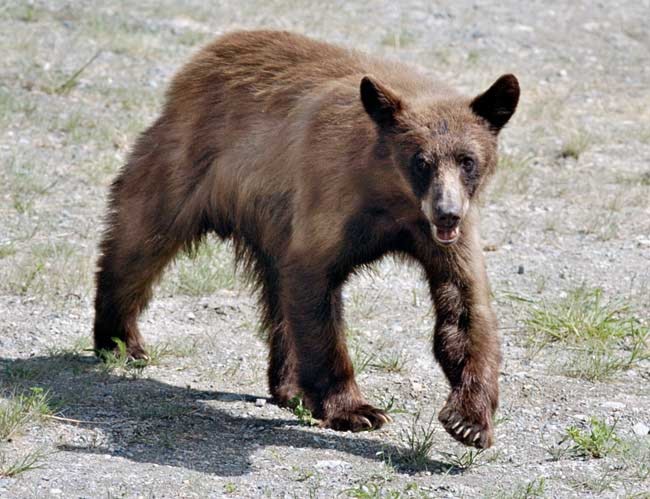Biologists call it hair snagging.
It requires making a triangular barbed-wire fence with enough room underneath for a grizzly bear to pass under.
In the middle, there’s a container with a smelly liquid inside, a kind of bear catnip.
Once, at a hair snagging site on the Yukon’s North Slope, a bear loved the stuff so much it rolled uncontrollably on top of the structure until the whole thing had collapsed.
“Some of them really lose their minds on it,” said Shelley Marshall, a carnivore technician with the Environment Department.
“There was hair everywhere,” she said.
The grizzlies aren’t just leaving behind molted tuffs from their coats.
Hair snagging is the only way we can find out the life story of a 500-pound mega mammal without risking fatal injury.
“It’s noninvasive,” said Marshall.
“We don’t see them and they don’t see us.”
The first hair snagging in the Yukon took place in the Kluane region in the early 2000s by Parks Canada and the University of Calgary.
Since then, biologists across northwest North America continue to unlock more information from inside single strands of hair.
Today, carnivore experts in the Environment Department know how to find out if a grizzly bear population is thriving or dying, from its hair.
For the last six years, the government did its first bear snagging on the grizzlies living on the tundra plains of the North Slope, the latitudinal stretch of land along the Yukon’s Beaufort Sea coastline.
Biologists are putting the final touches on that research now.
In the meantime, they’re starting to study grizzlies in the much more populated Southern Lakes region.
Both grizzly heavy areas represent drastically different dilemmas.
“This information should be viewed as an ecological problem,” said Marshall.
Bears on the North Slope are subject to hunting, mostly by the Inuvialuit who live in the region.
In the Southern Lakes, accidental human contact is the biggest bear killer, she said.
“Grizzlies moving in on humans is one of their biggest threats,” she said.
“They usually get shot.”
But before we can ask the ecological question of how humans are affecting grizzlies, we need to know how the grizzlies are living.
No one knows.
The last research was done in the 1980s.
It was really just best guesses by experts, said Marshall.
So biologists working on bears today are looking at three aspects of the hair that’s been snagged - DNA, stress hormones and isotopes markers.
The genetic information wrapped up in a grizzly’s DNA doesn’t come from the hair itself, but from the skin cells attached to the hair’s roots.
“That’s what tells us what’s really going on,” said Marshall.
By comparing the DNA of different grizzlies, biologists can determine the productivity of a bear population.
Traces of cortisol, a stress hormone found in all vertebrates, are found in the hair itself.
Bears only molt once a year and biologists can see the amount of cortisol over that time period deposited in the hair.
Cortisol is found in blood too, but a bear that’s just been shot with a tranquilizer is likely going to be pretty stressed out, ruining the sample.
A bear with more cortisol in its hair is generally having a harder time finding food, and is thus less likely to survive, said Marshall.
It’s also harder for a female to get pregnant if she’s stressed out, she said.
Isotopes tell the story of a bear’s diet.
Every kind of bear food has a distinct isotope marker that gets incorporated into the bear’s hair cells.
“You can compare the isotope marker of a berry with the isotope marker of marine food with the isotope marker of land-based meat,” said Marshall.
A bear’s diet tells us if the animal is searching for new food sources.
Biologists have also been collaring the grizzlies to monitor the populations.
When they dart the bears for collaring, which fall off on their own eventually, they gather information on fatty acids, another diet indicator, said Marshall.
They put collars on about 60 bears since 2004 in the North Slope and they only started collaring in the Southern Lakes last summer.
While the North Slope project is much closer to fruition, the Environment Department is looking for a lab to analyze the hair data from both regions.
They’ve put out tenders a few months ago, but no one has been chosen yet, said Marshall.
The hair snagging in the Southern Lakes will likely go on through 2012 and 2013, she said.
The Yukon has also decided to snag hair from black bears and wolverines in the Southern Lakes at the same time.
Once the hair is analyzed, the data be used for everything from hunting quotas, corridor management and land-use planning.
“Ecology drives decision-making,” she said.
Contact James Munson at
jamesm@yukon-news.com
